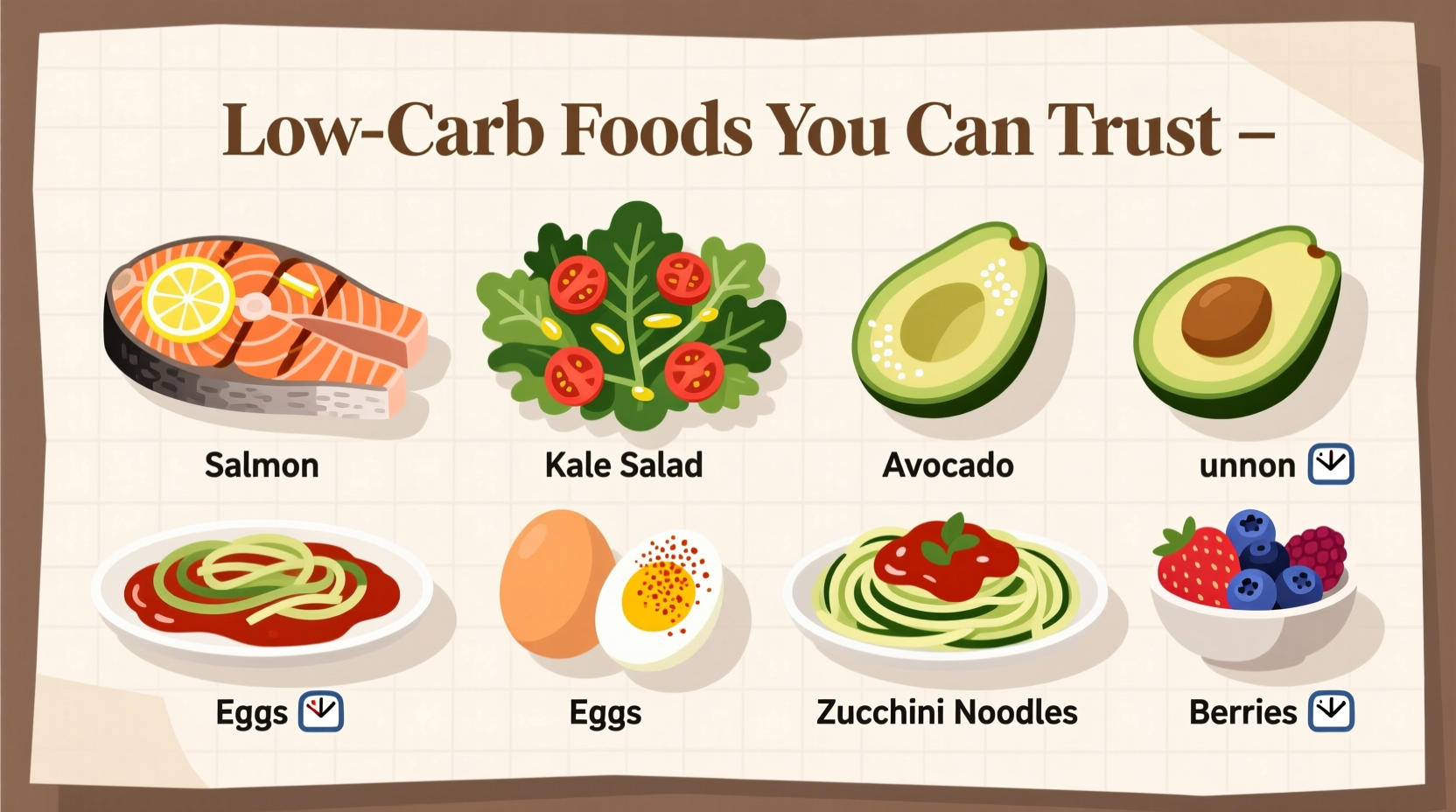Discover exactly which foods qualify as low carb and how to build balanced meals that support your health goals. This comprehensive guide delivers science-backed information you can trust, with practical food lists, portion guidance, and implementation strategies used by nutrition professionals.
What Exactly Qualifies as Low Carb?
When evaluating what are low carb foods, nutrition professionals typically use these benchmarks:
- Very low carb: Under 5g net carbs per serving (essential for ketosis)
- Moderately low carb: 5-10g net carbs per serving (suitable for weight maintenance)
- Net carbs = Total carbohydrates minus fiber and sugar alcohols
According to USDA FoodData Central, non-starchy vegetables generally contain 1-5g net carbs per cup raw, while starchy vegetables like potatoes contain 20-30g per serving. This critical distinction determines whether a food supports low carb eating patterns.
| Food Category | Low Carb Examples | Net Carbs (per 100g) | Key Nutrients |
|---|---|---|---|
| Non-Starchy Vegetables | Spinach, broccoli, zucchini | 1-5g | Fiber, vitamins K and C |
| Proteins | Chicken, beef, fish | 0g | Complete protein, iron, B vitamins |
| Healthy Fats | Avocado, olive oil, nuts | 0-4g | Monounsaturated fats, vitamin E |
| Dairy | Cheese, Greek yogurt | 1-5g | Calcium, probiotics |
Your Practical Low Carb Food Guide
Building a sustainable low carb eating pattern requires understanding which foods deliver maximum nutrition with minimal carbohydrates. Let's explore each category with implementation strategies used by registered dietitians.
Non-Starchy Vegetables: The Nutritional Powerhouses
These vegetables provide essential vitamins, minerals, and fiber while keeping carb counts low. The CDC recommends filling half your plate with non-starchy vegetables for optimal nutrition. Excellent choices include:
- Leafy greens (spinach, kale, arugula) - 1-2g net carbs per cup
- Cruciferous vegetables (broccoli, cauliflower, Brussels sprouts) - 3-5g net carbs per cup
- Zucchini and summer squash - 2-3g net carbs per cup
- Asparagus and green beans - 2-4g net carbs per cup
Research published in the American Journal of Clinical Nutrition confirms that non-starchy vegetables improve metabolic health markers while providing essential phytonutrients often missing in standard Western diets.
Proteins: Building Blocks Without the Carbs
All unprocessed animal proteins contain zero carbohydrates, making them ideal for low carb eating. The Mayo Clinic emphasizes that adequate protein intake supports muscle preservation during weight loss. Optimal choices include:
- Grass-fed beef and pasture-raised poultry
- Fatty fish like salmon and mackerel (rich in omega-3s)
- Eggs (6g protein with only 0.6g carbs each)
- Organ meats for concentrated nutrient density
Healthy Fats: Your Energy Source on Low Carb
When reducing carbohydrates, healthy fats become your primary energy source. The American Heart Association confirms that monounsaturated and saturated fats from whole food sources support heart health when consumed as part of balanced eating patterns. Incorporate these regularly:
- Avocados (2g net carbs per 100g)
- Olive oil and avocado oil for cooking
- Macadamia nuts and pecans (lowest carb nuts)
- Coconut products (milk, oil, flakes)
Understanding Context Boundaries for Low Carb Eating
While low carb diets benefit many people, they're not universally appropriate. The National Institutes of Health identifies specific populations where medical supervision is essential:
- Individuals with type 1 diabetes require careful medication adjustment
- Those with pancreatic disorders need professional guidance
- Pregnant or breastfeeding women should consult healthcare providers
- Athletes in high-endurance sports may need carb cycling strategies
A 2023 meta-analysis in Nutrition Reviews concluded that low carb diets show significant benefits for metabolic syndrome management but emphasized personalized approaches based on individual health status and activity levels.
Implementing Low Carb Foods Successfully
Transitioning to low carb eating requires practical strategies beyond just knowing what are low carb foods. Registered dietitians recommend these evidence-based approaches:
- Start with plate composition: Fill 50% with non-starchy vegetables, 30% with protein, 20% with healthy fats
- Read labels carefully: Watch for hidden sugars in sauces, dressings, and processed foods
- Track temporarily: Use apps like Cronometer for 1-2 weeks to understand carb content
- Plan for electrolytes: Increase sodium, potassium, and magnesium intake during adaptation
- Focus on whole foods: Minimize processed "low carb" products with artificial ingredients

Avoiding Common Low Carb Mistakes
Many people struggle with low carb eating due to preventable errors. The Academy of Nutrition and Dietetics identifies these frequent pitfalls:
- Insufficient fiber intake - Solve by increasing non-starchy vegetables
- Overconsumption of processed meats - Prioritize whole food proteins
- Neglecting micronutrients - Rotate vegetable colors for phytonutrient diversity
- Dehydration - Drink adequate water with added electrolytes
Remember that successful low carb eating isn't about restriction but about strategic food selection that supports your metabolic health. The key is finding your personal carb threshold that maintains energy while supporting your health goals.











 浙公网安备
33010002000092号
浙公网安备
33010002000092号 浙B2-20120091-4
浙B2-20120091-4